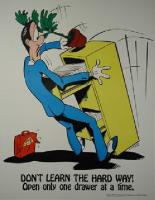Studies show that most employees that have been injured on the job want to go back to work as soon as they possibly can, following their recovery. Businesses, large and small, should have Return to Work policies in place and be sure that all employees understand them.
Employers should consistently demonstrate concern for their welfare and treat all employees the same. At the time an employee seeks medical attention, the physician should give him/her a prognosis as to when they can regain their full time employment. Companies may set a limit on transitional periods, i.e., 90 days, that the employee can perform lighter duties in order to resume some type of work plan.
There are also studies that show the following:
- The longer an employee stays off work, the less likely they are to return.
- It is to the benefit of the employer to prevent replacing the worker, by offering transitional work to the injured worker, in order to avoid a possible lawsuit, and face increased workers compensation costs.
- It is better to accommodate the person with on-the-job light duties than for them to work from home with restrictions.
- Companies with good return to work programs reduce lost workdays and have employees that want to return to work.
- Those employees who miss 6 months’ work are 50% more likely to not return.
- One-fourth of employees who miss 1 year of work will probably not return.
- If they are off 2 years or more, there is little chance of their return.
Companies that have disability programs that enable their employees to fulfill some form of duties prove to the employee that they are reliable and capable, and an asset to the employer, letting them know that their expertise makes them valuable employees. This also enables employees be self-sufficient.
“Early” Return to Work Programs decrease temporary total disability payments, as employees that are back on the job are earning wages again. The American Medical Association encourages their members to release employees to work as soon as they are medically able. It is proven that employees heal more rapidly and their treatment time is reduced, if the doctor releases them as soon as possible. This early return to work plan also serves as a cost reduction on Workers Compensation premium rates for the employer, and in certain cases, reduces legal costs.
Everyone needs to be on an even playing field in all walks of life. Employers that treat their employees fairly when they have been injured on the job are rewarded by employees that want to get back to their job and will do a good job for them. Successful safety programs and practices reduce injuries, making everyone happier, both the employer and employee!
